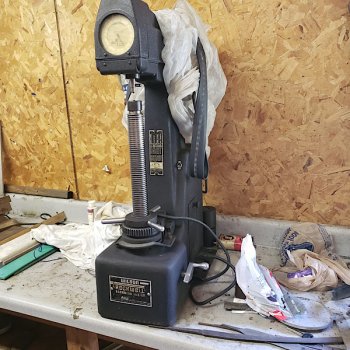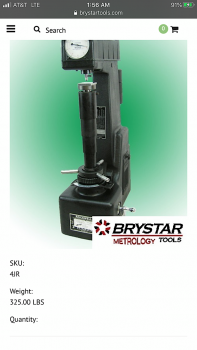I just refurbished a 4JR unit and, while it is heavy, it is not that heavy; a young man, with a good back, could heft it into your car. The weight quoted by BRYSTAR no doubt includes the crating, packaging and accessories. That being said- don't move it with the weights on the unit. The 1JR, 2JR, 3JR and 4JR, were the most common units and the only difference between then is the distance possible between anvil and the penetrator, allowing for increasingly larger work. The 1JR would be ideal for most knifemakers and would take up the least amount of head space, but I own a 3JR and love it.
As has been mentioned, the weights are the deal clincher, it is very rare to find them with all the weights and if you do your are lucky. The unit in your picture has two of the three weights showing, on the bench just behind the unit, there is a third to equal the 150Kg load necessary for "C" scale measurement. Also- do not move it, or allow it to be moved, without blocking up the load beam so that it is not sitting on the knives (pivot point fulcrums) when moved. This is the biggest mistake everybody makes when they move them, even many places that sell them used.
It is also not a good idea to move them with the dashpot full of oil, it will make a mess. And the first thin you will want to do, when it is at your, place is make sure the dashpot is full- never cycle it with an empty dashpot. It is also wise to remove the anvil while moving, but always remove the penetrator first, or hold a couple of fingers over the top of the anvil, between it and the penetrator, when you remove it. We all say we can be careful enough but it only takes one little tunk of the anvil to ruin a$300 penetrator.



